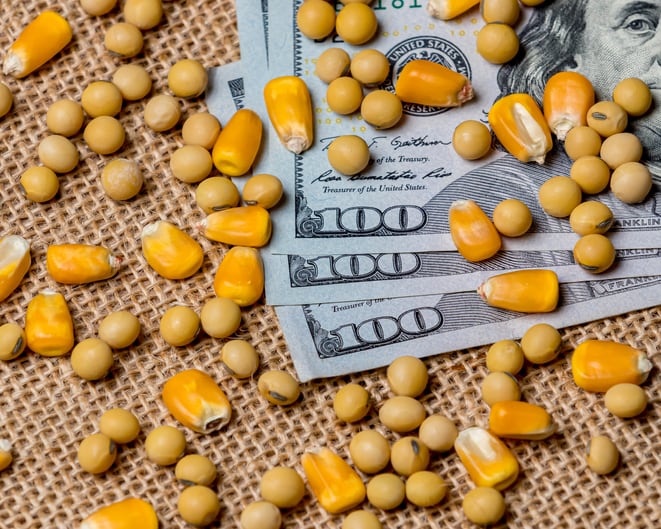Hopes for a substantial rebound in profitability for meat and poultry producers and processors in 2021 will be difficult to come by with corn and soybean meal prices at multi-year highs, forecasts Will Sawyer, lead economist, animal protein, CoBank.
Feed costs have been relatively benign since 2012, helping US beef, pork and poultry sectors to expand more from 2014 to 2019 than in any five-year period in the industry’s history, noted the report.
But, in 2021, the US animal protein sector will face 12% higher feed costs due to steeper corn and soybean meal prices – the highest since 2011, he said.
“With corn futures above $4 per bushel and soybean meal futures around $350 per ton, cattle feeders, hog producers and chicken producers face higher prices for feed than they have in many years. These higher feed costs come at a challenging time, as meat and poultry industry margins have been pressured by weak prices in 2020 due to COVID-19."
The pandemic not only impacted demand in the US, primarily in foodservice, but also processing through plant shutdowns, reduced plant efficiency from increased worker absenteeism, and higher costs through pay raises and investments in personal protective equipment (PPE). These higher plant costs have negatively impacted prices and margins for producers up the supply chain, commented Sawyer.
Chinese demand
Most of the increase in feed prices is driven by Chinese demand.
China is rebuilding its pork supply after African swine fever (ASF) decimated its hog herd, leading to a surge in US grain exports and prices. The country’s imports of animal feed look to surpass all-time highs in the 2020-21 crop year, driven by significant increases of not only soybeans but also corn.
“China has long held the top importer position for soybeans but China’s imports of corn is making waves in global grain and commodity markets. With that, expectations for increased US corn exports have climbed as the USDA now expects US corn exports to account for 24% of the crop versus 15% just one year ago,” said Sawyer.
This slow but meaningful shift in China’s ag imports has massive implications not only for animal protein and grain markets, but for agriculture globally, he reckons.
Prior to the outbreak of ASF, China accounted for nearly 30% of global animal protein consumption and, in 2020, will account for a similar level of global animal protein trade. “As China’s imports of animal protein fall and their imports of feed rise, we see US animal protein sectors facing higher feed costs and lower livestock prices resulting in a more difficult profit margin environment.”
La Niña also threatens grain and oilseed crop prospects in South America and Eastern Europe, finds the CoBank outlook.
Feed cost inflation
The impact of feed costs varies by species for a number of reasons, such as life cycle, feed ration, and components of other feed costs.
The report outlines how US hog producers are likely to face the highest level of feed cost inflation of 14% next year, closely followed by cattle feeders at 13%, and chicken producers at 11%, largely due to the shorter life cycle pulling forward the impact of higher feed costs into 2020.
“In fact, chicken producers are already experiencing feed cost inflation versus prior year levels, which will begin to be felt by the cattle and hog sectors in the first quarter of 2021. Feed cost inflation for the overall sector will be the most significant next summer when feed cost inflation climbs to 18% in the second quarter and 16% in the third, based on the current futures curve for corn and soybean meal prices.”
While feed costs will be more of a burden for the animal protein industry than seen in a number of years, meat and poultry supply growth is expected to slow in 2021. The USDA forecasts 0.8% overall growth for US beef, pork and chicken production in the coming year, with pork leading the way at 1.1% increased production, beef supply growing the slowest at 0.5% and poultry in line with the sector average.
“Industry margins are far better today than they were in the spring, but there will be tighter windows of opportunity for the livestock and poultry sectors to profit in 2021.”


